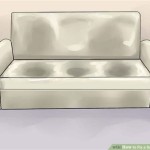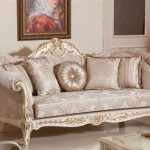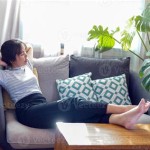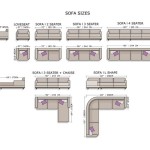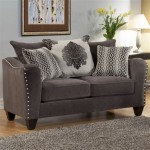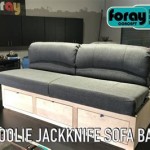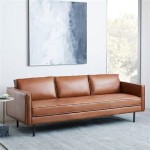Sofa Leg Protectors: Preservation and Functionality for Furniture and Flooring
Sofa leg protectors are small yet vital accessories designed to safeguard both the furniture itself and the flooring upon which it rests. These seemingly insignificant components play a crucial role in preventing damage, minimizing noise, and enhancing the longevity of sofas and the surfaces beneath them. The materials, designs, and functionalities of sofa leg protectors vary considerably, catering to diverse needs and aesthetic preferences. Understanding the various aspects of sofa leg protectors is essential for selecting the appropriate type for a given furniture piece and flooring material.
The primary function of a sofa leg protector is to create a barrier between the sofa leg and the floor. This barrier prevents direct contact, which can lead to scratches, dents, and other forms of abrasion. Wooden floors, in particular, are susceptible to damage from the weight and movement of furniture, and even seemingly minor shifts can result in noticeable imperfections over time. Similarly, tile, laminate, and vinyl flooring can also be scratched or marred by direct contact with sofa legs. By distributing the weight more evenly and providing a buffer against friction, sofa leg protectors mitigate the risk of damage to these surfaces.
Beyond protecting flooring, sofa leg protectors can also prevent damage to the sofa legs themselves. Many sofas are constructed with wooden legs that are vulnerable to chipping, scratching, and general wear and tear. Particularly in high-traffic areas, the legs can be inadvertently kicked or bumped, leading to cosmetic damage that detracts from the overall appearance of the furniture. Utilizing protectors can shield the legs from these impacts, preserving their finish and structural integrity. Furthermore, in situations where the sofa is frequently moved, protectors can minimize the risk of leg breakage or loosening.
The selection of appropriate sofa leg protectors depends on several factors, including the type of flooring, the style and size of the sofa legs, and the desired aesthetic. Consideration should also be given to the material of the protectors, as different materials offer varying degrees of protection and durability. The method of attachment is another crucial aspect, ensuring a secure and stable fit that prevents the protectors from slipping or detaching during normal use.
Types of Sofa Leg Protectors
Sofa leg protectors are available in a wide array of materials, shapes, and attachment methods, each tailored to specific needs and preferences. The choice of the appropriate type depends largely on the type of flooring, the size and shape of the sofa legs, and the desired level of protection.
Felt Pads: Felt pads are among the most common and affordable types of sofa leg protectors. These pads are typically made from a dense, fibrous material that provides a soft and cushioning barrier between the sofa leg and the floor. They are available in various shapes and sizes, including round, square, and rectangular, and can be easily attached using an adhesive backing. Felt pads are best suited for protecting hardwood, laminate, and tile floors from scratches and scuffs. However, they are not ideal for use on carpets, as they can easily become embedded with fibers and lose their effectiveness. Additionally, the adhesive backing may wear out over time, requiring periodic replacement.
Rubber Protectors: Rubber protectors offer superior grip and durability compared to felt pads. These protectors can be made from natural or synthetic rubber and are available in various forms, including caps, cups, and sleeves. Rubber protectors provide a more robust barrier against scratches and dents and are particularly effective in preventing furniture from sliding on smooth surfaces. They are often preferred for use on tile, linoleum, and other hard flooring materials. Some rubber protectors also feature a textured surface to enhance grip and prevent slippage. However, rubber can sometimes leave marks on certain types of flooring, so it is important to test the protectors in an inconspicuous area before applying them to all sofa legs.
Plastic Protectors: Plastic protectors are a durable and water-resistant option that is suitable for a wide range of flooring types. These protectors are typically made from hard plastic, such as polyethylene or polypropylene, and are available in various shapes and sizes. Plastic protectors offer good protection against scratches, dents, and moisture damage. They are particularly useful in areas where spills or moisture are a concern. Some plastic protectors also feature a smooth, rounded bottom to facilitate easy movement of the sofa. However, plastic can be less aesthetically appealing than other materials, and it may not provide as much cushioning as felt or rubber.
Metal Protectors: Metal protectors are the most durable and aesthetically diverse option. These protectors are crafted from materials like brass, stainless steel, or chrome, offering both robust protection and a refined, decorative accent. They come in various forms, including caps, cups, and decorative feet, and are attached using screws or adhesive. Metal protectors cater to various aesthetic styles, from classic to contemporary, and blend seamlessly with the existing furniture design. They excel in protecting against scratches, dents, and heavy impacts, making them ideal for high-traffic zones. However, metal can be more expensive than other materials and may require professional installation, particularly for screw-in types.
Factors to Consider When Selecting Sofa Leg Protectors
Beyond the type of material, several other factors should be taken into account when selecting sofa leg protectors to ensure optimal performance and longevity. These factors include the size and shape of the sofa legs, the type of flooring, the desired level of protection, and the method of attachment.
Size and Shape of Sofa Legs: The protectors must be appropriately sized to fit snugly and securely on the sofa legs. Protectors exceeding the leg dimensions can become unstable and ineffective, while those that are too small may not provide adequate coverage and protection. Prior to purchasing, measure the diameter or dimensions of the sofa legs accurately. Consider the shape of the legs as well; round legs require round protectors, while square legs require square protectors. Some protectors are designed to accommodate slightly tapered legs, but it's crucial to verify compatibility before purchasing.
Type of Flooring: The type of flooring significantly influences the choice of protector material. For hardwood floors, felt pads or rubber protectors are typically recommended to prevent scratches and scuffs. On tile or linoleum floors, rubber or plastic protectors may be more suitable due to their durability and resistance to moisture. Carpeted floors require protectors that are designed to prevent the sofa legs from sinking into the fibers, such as wide, flat protectors or specialized carpet-friendly protectors. Always consider the specific properties of the flooring material and select protectors that are compatible and effective.
Desired Level of Protection: The desired level of protection depends on the frequency of furniture movement and the weight of the sofa. For sofas that are rarely moved, basic felt pads may suffice to prevent minor scratches. However, for sofas that are frequently moved or subjected to heavy use, more durable protectors, such as rubber or metal, are recommended. Consider the potential for impacts and abrasion and select protectors that offer adequate cushioning and protection against these forces. In areas with high traffic or potential for spills, water-resistant protectors are recommended.
Method of Attachment: Sofa leg protectors can be attached using various methods, including adhesive backing, screws, or friction fit. Adhesive-backed protectors are the easiest to install but may not be as durable as other options. Screw-in protectors provide a more secure and permanent attachment but require drilling into the sofa legs. Friction-fit protectors, such as caps or sleeves, rely on a snug fit to stay in place and are relatively easy to install and remove. The appropriate method of attachment depends on the desired level of stability, the ease of installation, and the potential for future removal or replacement.
Installation and Maintenance of Sofa Leg Protectors
Proper installation and regular maintenance are essential for ensuring the effectiveness and longevity of sofa leg protectors. Improper installation can lead to premature wear, slippage, and reduced protection. Regular maintenance, such as cleaning and replacement, can help to maintain the protectors' performance and prevent damage to the flooring and furniture.
Installation Procedures: Depending on the type of protector, the installation procedure may vary. For adhesive-backed protectors, ensure that the sofa legs are clean and dry before applying the protectors. Peel off the backing and carefully align the protector to the bottom of the leg, pressing firmly to ensure a secure bond. For screw-in protectors, use a drill to create pilot holes in the legs before inserting the screws. For friction-fit protectors, simply slide the protector onto the leg, ensuring a snug and secure fit. Follow the manufacturer's instructions carefully to ensure proper installation.
Cleaning and Maintenance: Regularly inspect the protectors for signs of wear, damage, or displacement. Clean the protectors periodically with a damp cloth to remove dirt and debris. For felt pads, vacuuming can help to remove embedded fibers. For rubber and plastic protectors, use a mild detergent to clean the surface. If the protectors become worn or damaged, replace them promptly to maintain their effectiveness. Check the adhesive on adhesive-backed protectors periodically and reapply adhesive if necessary. Loose or damaged protectors can cause more harm than good, so it is crucial to address any issues promptly.
Preventative Measures: To prolong the lifespan of sofa leg protectors, avoid dragging or sliding the sofa across the floor unnecessarily. Lift the sofa when moving it to prevent excessive wear and tear on the protectors. Use furniture sliders in conjunction with protectors when moving heavy furniture over long distances. Avoid placing heavy objects on the sofa that could put excessive strain on the legs and protectors. By taking these preventative measures, the protectors will maintain effectiveness and the flooring and furniture will be protected for a longer period.
Choosing and maintaining appropriate sofa leg protectors is an investment in the longevity and appearance of both furniture and flooring. By considering the materials, design, and attachment methods, and following proper installation and maintenance procedures, individuals can effectively protect valuable assets from damage and wear.

Chair Leg Socks Knitted Elastic Furniture Protectors Temu

1roll 100cm Anti Slip Felt Furniture Leg Pad Self Adhesive Mat Floor Protector Wear Resisting Table Sofa Pads Chair Fittings Joom
24 Pcs Knitted Chair Leg Protectors For Hardwood Floors Double Thickness Built In Silicone Non Slip With Felt Bottom High Elastic Furniture Feet Socks Caps Covers Pads Scratching Reduce Noise Brown Com

Furniture Pads Floor Protectors Felt For Chair Legs Rubber Feet Self Adhesive Protector Protect Home Crafts Israel

The Furniture Leg Protectors Lavaldo

24pcs Self Adhesive Furniture Leg Feet Protector Pad Chair Anti Skid Scratch Diy Resistant Floor Pads Foot Cushion Dining Table Mute Slip Stickers Sofa

Rubber Table Chair Furniture Feet Leg Pads Tile Floor Protectors China Made In Com
Buy Myhomesworld Silicone Chair Leg Protectors Furniture Covers For Stool Table 4 Pcs At Best S In Jiomart

Furniture Pads Non Slip 24pcs 2 Leg Gripper Self Adhesive Rubber Feet Anti Scratch For Hardwood Tile Wood Floor Chair Protectors Com

The Furniture Leg Protectors Lavaldo

